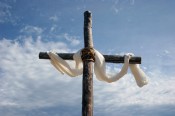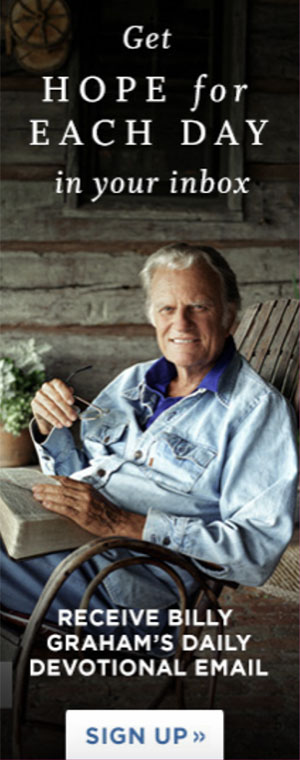There is very little water to drink in Sendai, Japan.
Food lines are up to five hours long with little to buy at the end.
The weather has turned bitter cold, dropping to 30 degrees at night, with a wind chill temperature of 18 degrees.
And making matters worse: “It’s snowing there,” said Chad Hammond, BGEA Associate Director of Asian Affairs via telephone from Osaka, Japan. “The whole situation is chaos.”
But Hammond, who served as the Franklin Graham Festival director in Osaka, is trying to make sense of the chaos, leading a recovery effort unlike any Japan has seen in generations.
And nothing is more urgent than the lack of water. Especially in Sendai, the hardest-hit area of the March 11 earthquake and tsunami.
“Everybody is experiencing a lack of water,” Hammond said. “The water is a huge problem up there. It wasn’t so much the earthquake as it was the tsunami that brought the devastation.
“What happened is the water has gotten into all the wells. All the sea water is in the wells and there’s no drinking water.”
Meeting the most basic needs to the Japanese people is the first priority. Water. Blankets. Hygiene and first aid kits.
Despite having to stop and change into snow tires to deal with the deteriorating road conditions, the initial 14-member team consisting of Samaritan’s Purse staff and local church members arrived with a three-vehicle convoy late Wednesday night in Sendai, carrying four tons of emergency relief supplies.
For most of the journey from Tokyo, their convoy and Japanese civil defense force vehicles were the only traffic on a six-lane highway closed to civilian traffic, creating an eerie, even surreal experience for those traveling.
“They’re dealing with the cold weather and lack of bedding and blankets and things like that,” Hammond said. “Electricity is being rationed. They’ve lost their homes. They lost their clothes. They lost everything.”
‘HE COULD NOT BELIEVE WE WERE COMING’
Phone service had been out all weekend.
Hammond kept trying to reach some of the 12 local pastors he had met with in Sendai a few weeks ago to talk and pray about the possibility of another festival in Japan.
Finally, someone picked up. One of the pastors who lost his home and was living at the church with his family.
But still no word from Rev. Ryuzo Shima, the senior leader in Sendai.
Until Monday, when Shima’s cell phone service kicked back in.
“He had been in a house with no electricity, with no water, with no food, with nothing,” Hammond said. “And he did not know what had happened.
“He was living in the house with his wife and they were not aware of the devastation, they just knew something bad happened.”
Hammond was able to deliver some hope. Supplies were coming. He was coming. Help was coming.
“He called us three times on Monday,” Hammond said. “He could not believe we were coming.
“He could not believe the same men that were in the church meetings two weeks ago to talk about a Festival are now returning with supplies.”
And 90 more tons of supplies from Samaritan’s Purse will soon be on its way as a 747 cargo jet is scheduled to leave Charlotte, N.C. on Friday, landing in Japan on Saturday.
“There’s about 200,000 families who have been evacuated and that’s increasing every day,” Hammond said. “There’s thousands of people without homes now.
“I saw some pictures today where everybody has been sleeping under blue tarps. They’re building these tent villages. They’re a long way from getting out of this.”
‘A TREMENDOUS OPPORTUNITY’
Hammond is the first to tell you the situation is dire in Japan. “There are many, many needs we have,” he said. “This is not going away in two or three weeks or months.”
But as great as the challenge is, he knows that God is even bigger. He also recognizes an open door in this country that is unprecedented.
“This is an opportunity that has never happened in Japan,” said Hammond, who spent three years building country-wide relationships with local churches for the Kansai Franklin Graham Festival, held last October in Osaka. “It’s never happened in Japan where Christian churches, with partners like BGEA and Samaritan’s Purse, are able to bring help and healing to their whole country.”
The Christian community, according to Hammond, is less than half of one percent of the total population.
“The rest of the country of Japan can look at these churches and look at these pastors and look at these Christians with much more credibility when they see how we are working together to bring positive change, but doing it in the name of Jesus Christ.”
Preston Parrish, Executive Vice President of Ministry at BGEA, feels like the timing of the recent Festival, along with over 50 years of working with Japan through Billy Graham’s ministry, is God-ordained.
“The long-standing relationships we’ve had in Japan has set the stage for a fast response,” Parrish said. “We see time after time in the work of BGEA, God positions us as instruments to spread His Gospel.
“No one would have asked to be in a position to be involved in such a heart-breaking scene, but He positions His people to be a light in this world.”
And the relationship between BGEA and Samaritan’s Purse has position this partnership to be even more effective in a relief effort of this magnitude.
“It’s really a blessing to be apart of this because you see how God has woven these two ministries together just sovereignly. It just fits,” Hammond said.
‘WE DON’T KNOW HOW TO DO THIS’
The physical need, as great as it is, may not compare to the emotional and spiritual needs facing the people of Japan.
A couple days after the disaster, Hammond was meeting with about 15 pastors from Japan, explaining details of the grief and crisis training that he could provide them.
“When they heard what it was and the content provided they were very excited and they overwhelmingly asked for and endorsed the training,” Hammond said.
Some in Japan were still dealing with the aftermath of the 1995 quake that hit near Kobe, killing over 5,000 people.
“The pastors understood that when that happened, they did not deal with the trauma and they saw the negative aspects,” Hammond said. “The pastors in Kobe got very, very sick.”
“Those issues have really touched their heart when they hear what we’re going to do. One of the pastors said ‘We’re so glad you’re here because we don’t know how to do this.'”
‘A SCARY, SCARY TIME’
If ever there was a need for the local church in Japan, this is it. But there’s also plenty of work for the local church in the United States.
“This is really an hour for the church in Japan as well as brothers and sisters in Christ to pray together,” Parrish said. “It’s time to experience the love and hope of Jesus Christ.”
Thousands of lives have already been claimed with countless others still missing. The 9.0-magnitude earthquake, tsunamis as high as 33 feet and the threat of nuclear reactor meltdowns nearing levels of Chernobyl have left a country searching for answers.
“It’s a scary, scary time for people,” Parrish said. “They need to know the God in heaven knows their situation and cares for them.
“I think it would be wonderful if churches across the United States would come together and pray for Japan or for certain churches or for a certain city in Japan.”
Parrish has been encouraged about the financial response already to this ongoing tragedy and there is plenty of opportunity to still act.
“Just to give enough to send a warm blanket to keep someone warm at night would be a visible demonstration of the love of God,” Parrish said.
Hammond is finding out first-hand how great the need really is.
“The death toll is still rising every day,” he said. “We would just ask to search your heart, pray for the people and see how God would lead you to participate in the recovery.”

